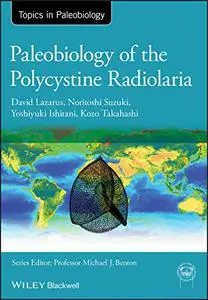Paleobiology of the Polycystine Radiolaria by David Lazarus, Noritoshi Suzuki, Yoshiyuki Ishitani, Kozo Takahashi
English | PDF | 2021 | 490 Pages | ISBN : 0470671440 | 35.3 MB
Polycystine radiolaria are exclusively marine protists and are found in all ocean waters, from polar regions to the tropics, and at all water depths. There are approximately 600 distinct described living species and several thousand fossil species of polycystines. Radiolarians in general, and polycystines in particular, have recently been shown to be a major component of the living plankton and important to the oceanic carbon cycle. As fossils radiolarians are also fairly common, and often occur in sediments where other types of fossils are absent. This has made them very valuable for certain types of geologic research, particularly estimating the geologic age of the sediments containing them, and as guides to past oceanic water conditions. As our current understanding of the biology, and even taxonomy of the living fauna is still very incomplete, evolutionary studies based on living polycystines are still rare. However, the common occurrence of numerous specimens for many species, and in a wide variety of oceanic environments, provides an excellent opportunity to study the processes of biologic evolution in the fossil record.



